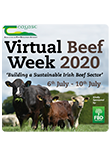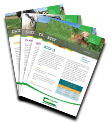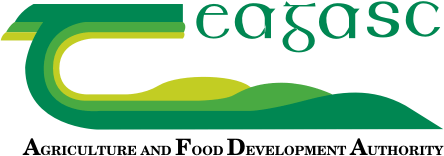
Grass-based production systems offer an economic advantage for Irish beef farms. There is renewed interest in 100 % grass-fed beef, which is perceived as being more ‘sustainable’ by consumers. However, there is little research information on rearing and finishing progeny from the suckler beef herd on grass-forage diets solely.
- Date
- 10 July 2020
- Type
- Media Article

The critical issues pertaining to welfare of housed beef cattle identified by the European Food Safety Authority (EFSA) and the European Commission include, space allowance and flooring. Find out more about research being carried out in order to examine the impact of floor type on the welfare and performance of beef cattle, and to quantify the financial implications of alternative options.
- Date
- 10 July 2020
- Type
- Media Article

Ruminant livestock directly contribute an estimated 60% of Irish agriculture’s greenhouse gas (GHG) emissions through the production of methane. As part of the EU funded projects RumenPredict and MASTER, members of Teagasc, UCD and ICBF are partnered in an effort to better understand the biological mechanisms associated with methane output.
- Date
- 10 July 2020
- Type
- Media Article

The bull has a huge influence on the rate of genetic progress in cattle, particularly when used through artificial insemination. Novel research currently being conducted at Teagasc Grange is focused on understanding the underlying physiological and molecular mechanisms regulating the role of nutrition in stimulating sexual development.
- Date
- 10 July 2020
- Type
- Media Article

Ireland’s climate has encouraged the development of “grass-fed” as a point of difference for Irish beef in high-value markets in Europe and beyond. A study at Teagasc Grange asked: what is the comparative nutritional composition of Irish beef which is long term grass-fed, grass/silage plus concentrate-fed or concentrate-fed, and what are the implications of the different sources of beef for the health of the beef consumer? Project lead Aidan Moloney tells us more.
- Date
- 10 July 2020
- Type
- Media Article





Internal parasites are one of the main threats that need to be considered for animals at grass. Researcher Orla Keane has some information and advice on Lungworm and Gut worm
- Date
- 09 July 2020
- Type
- Media Article
